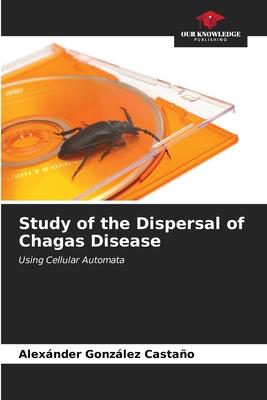Chagas disease is endemic to tropical-rural areas and has become a public health problem in Latin America (from Patagonia to the southern United States). The World Health Organization estimates that 17 million people are infected and 100 million more are at risk of infection. Considering the routes of transmission, it has spread to non-endemic regions of Europe and the United States. The chronic phase of the disease has an average duration of 15 years and there are no appropriate drugs or vaccines available to treat it; during this period those infected develop stroke and neurological disorders, as well as severe inflammation in their intestines, esophagus and heart, the latter being the cause of highest mortality. Bearing in mind the scarce knowledge of the dynamics of the disease dispersion, a study of the dispersion in humans was carried out in a non-endemic area of Colombia. The computational technique "Cellular Automata" was implemented to predict the number of infected people and their geographical distribution in the study region, taking into account the sexual, congenital and transfusion transmission routes.
| FindBook |
有 1 項符合
Study of the Dispersal of Chagas Disease的圖書 |
 |
Study of the Dispersal of Chagas Disease 作者:González Castaño 出版社:Our Knowledge Publishing 出版日期:2024-01-15 語言:英文 規格:平裝 / 56頁 / 22.86 x 15.24 x 0.33 cm / 普通級/ 初版 |
| 圖書館借閱 |
| 國家圖書館 | 全國圖書書目資訊網 | 國立公共資訊圖書館 | 電子書服務平台 | MetaCat 跨館整合查詢 |
| 臺北市立圖書館 | 新北市立圖書館 | 基隆市公共圖書館 | 桃園市立圖書館 | 新竹縣公共圖書館 |
| 苗栗縣立圖書館 | 臺中市立圖書館 | 彰化縣公共圖書館 | 南投縣文化局 | 雲林縣公共圖書館 |
| 嘉義縣圖書館 | 臺南市立圖書館 | 高雄市立圖書館 | 屏東縣公共圖書館 | 宜蘭縣公共圖書館 |
| 花蓮縣文化局 | 臺東縣文化處 |
|
|
圖書介紹 - 資料來源:博客來 評分:
圖書名稱:Study of the Dispersal of Chagas Disease
|









